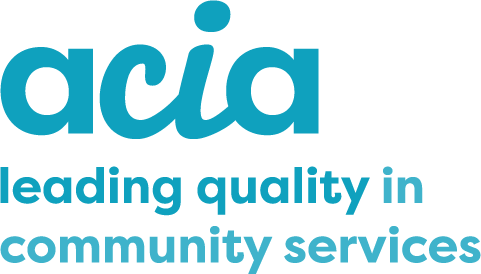Managing risk: Worker and Participant health and safety

Program manager and Support Workers
- Risk
Management - Worker and Service User
health and safety - Duty of Care vs
Dignity of Risk - Risk management
resources
Risk Management
Risk management is the practice of identifying potential risks in advance, analysing them and taking steps to reduce the risk or potential impacts
Risk management, in essence, is a process of:
a) Identify the risks
b) Establish the degree of risk and likelihood of it occurring
c) Take actions to minimise the risk
There are many forms of risk management, for example, financial risk management, worker health and safety risk management, disaster risk management.
Boards and public officers have a responsibility for ensuring their organisation has relevant risk management plans in place.
Risk management is a continual process embedded in the way things get done.
Worker and Service User health and safety
This site is about managing risk in providing attendant care to achieve worker and service user health and safety.
Worker and Participant health and safety
This site is about managing risk in providing attendant care to achieve worker and Participant health and safety.
What is Workplace health and safety (WHS)?
Workplace Health and Safety (WHS), often referred to as Occupational Health and Safety (OH&S) involves the assessment and migration of risks that may impact the health, safety or welfare of those in your workplace.
This may include the health and safety of your Participants, employees, visitors, contractors, volunteers and suppliers. Service providers have legal requirements that they must comply with to ensure they meet WHS obligations.
WHS or OH&S – What’s the difference?
Before 2012, workplace health and safety (WHS) laws were known as Occupational Health and Safety (OH&S) laws. These laws differed across Australian states and territories. To make the laws more consistent across Australia, in 2012 the state and territory governments agreed to develop model laws (WHS Act and Regulations), on which they could base their health and safety laws.
WHS obligations for service providers
Service providers have legal responsibilities to implement health and safety practices in in the workplace.
Under Australian WHS/OH&S legislation service providers are legally obliged to:
- Provide safe work premises
- Assess risks and implement appropriate measures for controlling them
- Ensure safe use and handling of goods and substances
- Provide and maintain safe machinery and materials
- Assess workplace layout and provide safe systems of work
- Provide a suitable working environment and facilities
- Have insurance and workers’ compensation insurance for your employees.
Though it may cost to implement safe practices and install safety equipment, the effect of not taking action can be severe and costly. Complying with WHS requirements can prevent you from being prosecuted and fined, and help you to retain skilled staff.
WHS obligations for workers
People working in your organisation have work health and safety obligations to themselves, their workmates and others who may be impacted by the work they do.
They must:
- Comply with instructions given for work health and safety
- Use any provided Personal Protective Equipment (PPE) and be properly trained in how to use it
- Not wilfully or recklessly interfere with or misuse anything provided for work health and safety at the workplace
- Not wilfully place others at risk not wilfully injure themselves.
Duty of Care vs Dignity of Risk
In providing attendant care that achieves worker and Participant health and safety important considerations are:
- Duty of care
- Dignity of risk
Both duty of care and dignity of risk need to be achieved.
This video examines the vital differences between duty of care and dignity of risk. Emi Golding from the Mental Health Recovery Institute explains when each applies and what to do about it.
Risk management resources
Australian Risk Management Standards
AS/NZS ISO 31000:2009, Risk management - Principles and Guidelines.
- Application of framework for risk management
- Principles for managing risk
- Enhanced risk management attribute
- Guide to establishing and implementing effective risk management process
- Risk management context
WHS (Workplace health and safety) Australia
Workplace Health and Safety (WHS) National legislative Framework
Workplace Health and Safety (WHS), often referred to as Occupational Health and Safety (OH&S) involves the assessment and migration of risks that may impact the health, safety or welfare of those in your workplace.
This may include the health and safety of your clients, employees, visitors, contractors, volunteers and suppliers. Service providers have legal requirements that they must comply with to ensure they meet WHS obligations.
Before 2012, workplace health and safety (WHS) laws were known as Occupational Health and afety (OH&S) laws. These laws differed across Australian states and territories. To make the laws more consistent across Australia, in 2012 the state and territory governments agreed to develop Model laws (WHS Act and Regulations), on which they could base their health and safety laws.
Working Safely in Community Services
Working Safely in Community Services Worksafe Vic
This publication provides information on how community service organisations can, through careful planning and consultation with employees, effectively manage workplace health and safety issues. It provides valuable checklists and tools to help formulate health and safety management plans.


